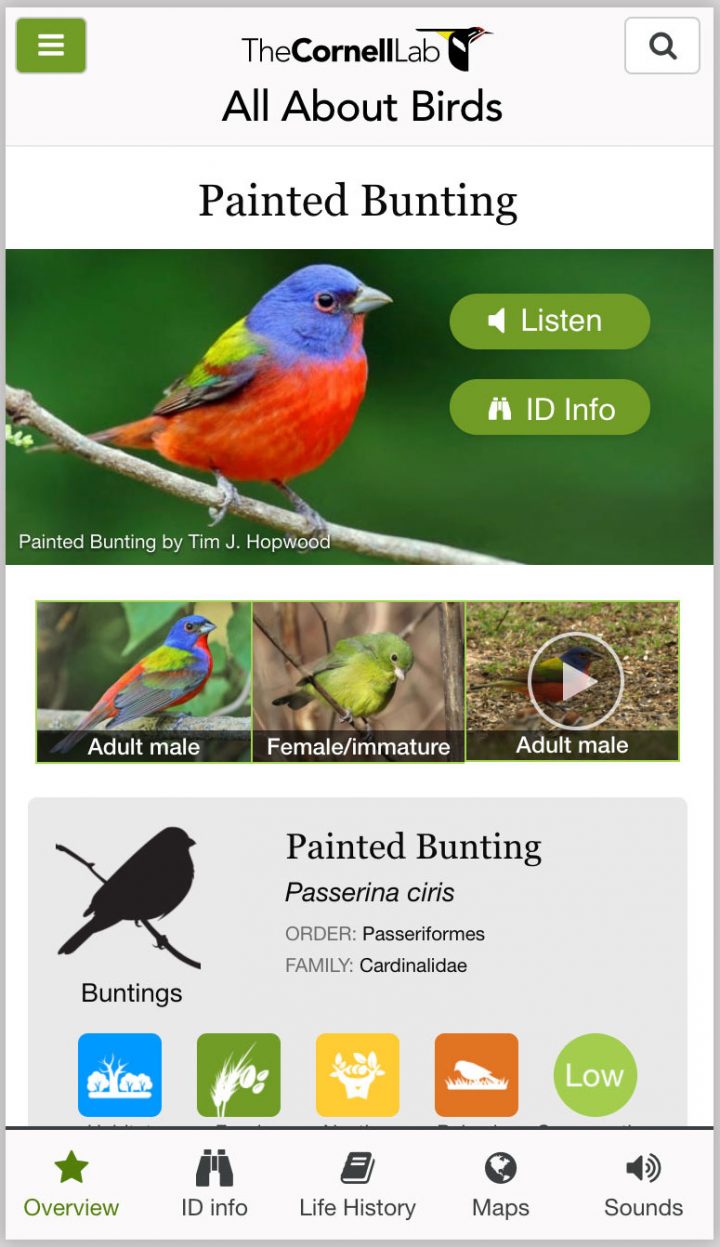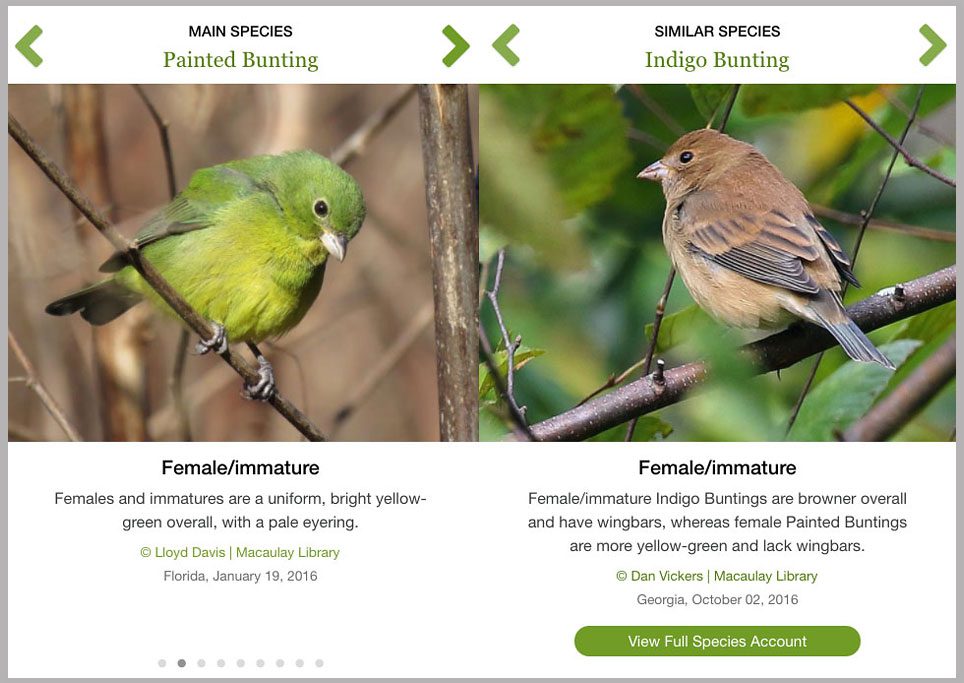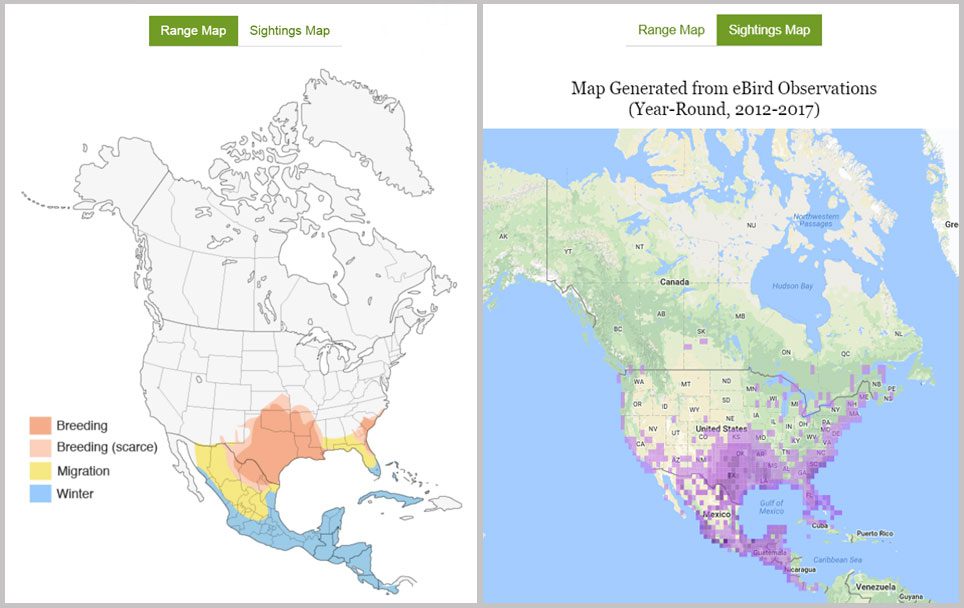Redesigning Our Online Species Guide: A Look at What’s New
February 13, 2018
In Feb 2018 we launched a redesign of our All About Birds species guide. The following is a rundown of the major changes.
The species guide is the heart of our All About Birds website, accounting for some 80% of the traffic our site gets. So when it came time for a redesign, we started from the ground up. The new site is completely remodeled to put the information—photos, ID hints, cool facts, life history details, maps, conservation status, and more—right where you need it. Here are some of the main changes and highlights:
Mobile optimized: images, text, and layout automatically resize to fit the device you’re using. On phones, look for app-inspired navigation tabs at the bottom of the screen to take you from point to point.
New “Overview” tab: There’s a lot of info in an All About Birds account. The Overview tab puts the top hits at your fingertips:
- a large-format image
- a recording of a typical song or call
- a quick link to all other ID photos
- range map
- basic description
- icons to tell you what the bird does and where it lives
- expert tips on how to find the bird
- backyard tips
- cool facts
All-new images: Images are integral to understanding birds, so we put them front and center in the new design. We made the images larger for more detail, and we’re using an entirely new set of photos (more than 7,500) curated by experts at our Macaulay Library.

Similar species compare tool: Narrowing down an ID? Dive into our compare tool for side-by-side comparisons of similar species. Each species has a hand-picked set of similar species photos, and each photo has a caption that tells you exactly what to look for to distinguish species A from species B. It’s a feature that doesn’t appear in any other species guide.
Links to more images and sounds from the Macaulay Library archive: In case you don’t find quite what you’re looking for in our species account, you can click through to more images and sounds. Each link takes you to a ready-made search results page that displays the highest-rated images or sounds for the species you’re on (more about rating of Macaulay assets).

eBird sightings maps: In addition to range maps for North America (via Birds of the World), you can click over to zoomable eBird maps and explore a species’ worldwide range. See the maps tab for Painted Bunting.
Videos appear alongside images: one tab that no longer exists on the site is the Video tab—and that’s because we now intersperse Macaulay Library videos alongside photos so you can watch how a bird forages or flies, or hear it call, as easily as studying a still photo.
And coming soon: Merlin Bird ID for the Web. Our popular free smartphone app, Merlin, will soon be available from our website as well. Merlin asks you five simple questions and gives you a short list of likely species—so you can use this feature to ID the bird, find its species account, and learn more about it.
Try It Out—and Tell Us What You Think
We hope you have fun with this new version of the site. Explore the site here. We designed it for you—so we’re keen to hear what you think. Here are some suggestions for where to start:
- Dark-eyed Junco
- Golden-crowned Kinglet
- Tufted Titmouse
- Western Screech-Owl
- Wood Duck
- Prairie Falcon
- Cactus Wren
- or search for your favorite
Please send us comments, criticisms, bugs, broken links, and any other notes by leaving us a public comment on this post or by emailing us at cornellbirds@cornell.edu.

All About Birds
is a free resource
Available for everyone,
funded by donors like you
American Kestrel by Blair Dudeck / Macaulay Library
